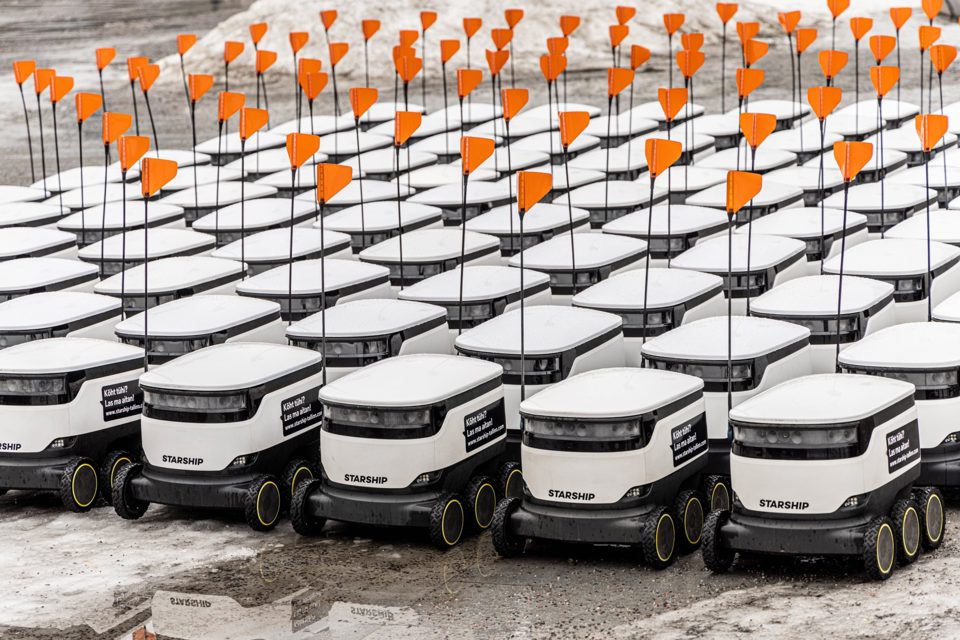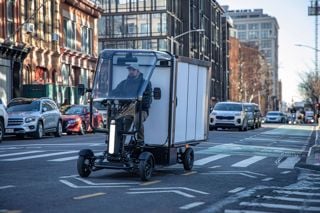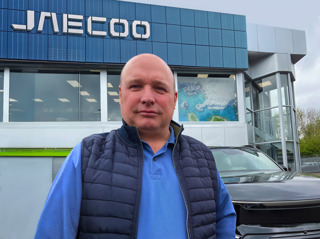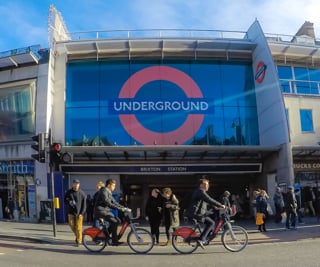After a century of business models based on vehicles with internal combustion engines, major corporations are rethinking their entire modus operandi on their quest to become carbon net zero. Rather than pursue a like-for-like swap of car or van for battery-powered equivalent, companies are reviewing and revolutionising their business processes to drive efficiencies and eliminate greenhouse gas emissions.
At the forefront of these lateral-thinking developments is Schindler, whose elevators, escalators and walkways transport two billion people per day. The company is involved in major construction projects around the world, as well as servicing and maintaining the vertical mobility systems it has already installed.
Historically, this work would have been conducted by technicians who drove to building sites buildings and customer premises in vans. But a series of innovative trials and large-scale initiatives are transforming the way the company operates, optimising costs, boosting efficiency and most importantly, shrinking its carbon footprint. Schindler’s plan to achieve net zero by 2040 has been approved by the Science Based Targets initiative.
In Berlin, for example, the company installed its first FlexPoint hub in 2023. The hub is similar to a shipping container, and serves as both a workshop and a secure warehouse for overnight deliveries. Spare parts are delivered to the FlexPoint, where technicians load them onto their cargo bikes, before travelling to customer sites. The silent bikes, which have a large storage box behind the driver, can use cycle lanes and park on pavements, helping to reduce congestion and minimising wasted time spent searching for parking bays on busy city streets. Plus, with the bike parked immediately outside the customer’s building, technicians don’t face long walks back to their vans to fetch required parts.
Luca Mancuso, Global Category Manager Mobility, Schindler, explained that the company had gone right back to the drawing board to focus on its business need to transport technician, tools and spare parts to a site. By disconnecting the delivery of tools and parts from the driver’s travel, more sustainable solutions have become possible, especially for sites where technicians might be engaged for several weeks installing or modernising elevators and escalators.
The first of these is a large, secure toolbox delivered along with parts to a site by a logistics provider before a project starts, freeing the technician to travel by car, bike or public transport, rather than a large van.
“The employee can just take a small backpack with a small toolkit,” said Mancuso.
A second option is for technicians to store their tools in a secure trailer, which they tow to a site and leave in a safe place. This is enabling Schindler to deploy small electric cars, which are perfectly capable of towing the trailer, and for the rest of a project drivers commute to the site in the small EV.
“We no longer need a LCV, but just an electric car, so we can downsize our vehicles, or more extreme, we can even use public transport,” said Mancuso. “It's also much easier to move around a city with these vehicles compared to a diesel van.”
The use of hybrid and electric cars instead of vans is rapidly improving the environmental performance of Schindler’s service and maintenance fleet, too. The company has worked with a racking specialist supplier to develop solutions for cars. Last year in Spain, the company deployed a large number of small hybrid cars, converted to carry all the tools its technicians needed, and in other markets and for other applications it has developed racking to convert mid-size hybrid SUV and electric cars/SUVs into LCVs. These developments are enabling Schindler to reduce the number of diesel vehicles from its fleet, provide vehicles with better safety features to its drivers, reduce costs, and enhance its sustainability.
Perhaps the most visible diesel vehicles on city streets are last-mile delivery vans, responsible for much of the 35% increase in LCV traffic since 2012. With online retailers keen to demonstrate their green credentials throughout their supply chain, logistics companies are adopting smaller, cleaner alternatives to traditional panel vans. Evri has announced plans to expand its electric cargo bike numbers to 3,000 over the next decade, and DPD and UPS have both started adding the vehicles to their fleets.
Delivery Mates already operates a 400-plus cargo bike fleet in the UK covering major cities. The company’s electrically-assisted bikes do not require a driving licence to ride, widening the potential recruitment pool, and typically have a covered cockpit for the rider with a 2.1 cubic metres box behind. The bikes do not require the same charging infrastructure as an electric LCV, with their removable batteries charging overnight via a standard three-pin plug, although securing power to the company’s micro-mobility hubs, where 20 to 30 bikes return at the end of their shifts, is still an issue.
“Cargo bikes can be just as effective as a long-wheel-based Transit van,” said Leonard Fraser, co-founder of Delivery Mates. “They're more efficient – so, our guys will do just as many deliveries on our cargo bikes as a van would do in a day, they’ll probably just make two journeys per day, returning to the hub to pick up a second consignment of parcels.”
Packages are delivered via electric van to the hubs, from where the couriers zip around city streets, avoiding congestion by using bus and cycle lanes, and stopping with What3words precision outside customer addresses.
“We reduce CO2, we reduce NOx emissions, and we reduce particulate matter,” said Fraser.
There are, however, still fleet management issues to consider. The cargo bikes are inspected at the start and end of every shift, with particular attention paid to tyres, and a team of mechanics is on standby to fix any issues. There are also fewer funding options available, said Fraser, with leasing asset finance companies reluctant to get involved due to a lack of residual value data.
“As a company, we've had to purchase the cargo bikes from the manufacturers, although more recently we've tried to rent them. The climate is now changing, and there are a number of finance companies now tentatively starting to look at cargo bikes,” he said.
One of Delivery Mates customers, Laundryheap, has calculated that replacing a diesel-powered delivery van with two cargo bikes can reduce CO2 emissions by 34 tonnes per annum.
Sometimes, however, it’s people rather than packages for which businesses are seeking alternative transport options to the orthodox one-driver-one-car model, whether for commuting, business journeys or grey fleet usage.
“Business priorities can vary from reducing costs, emissions or a need to influence change behaviour in the way their employees travel,” said Adrian Bewley, assistant vice president Enterprise Mobility for European Business Rental.
Enterprise has pioneered corporate car clubs, a solution that can transform a traditional pool fleet into a more flexible and agile system akin to a small daily rental station. Via the Enterprise Travel Direct (ETD) booking platform, keyless entry and telematics technology, car club vehicles bring greater control and visibility to vehicle usage and grey fleet mileage.
If a user books a car, but does not undertake the trip, the system flags the vehicle has not been occupied at the time it should have been, and the car becomes instantly bookable again, improving utilisation rates.
The Defence Science & Technology Laboratory (DSTL) has introduced 100 Enterprise car club vehicles to three sites to enhance the sustainability of its business travel. By having the vehicles on site, Dstl has significantly reduced the requirement for the delivery and collection of rental vehicles, saving an estimated 372,000 miles to and from rental stations and more than 100 tonnes of CO2e in a year.
“For Dstl, employees can opt for public transport for their daily commute and help to minimise traffic and air pollution, while having access to vehicles at work for essential business travel,” said Bewley. “We have repurposed grey fleet and daily rental journeys into on site and on street car clubs. Daily rental is being used as either a top up when needed or to target specific trips (one-way trips, for example) that are not best suited to car club.”
The one thing that all these alternative mobility solutions have in common is a driver or rider. But the brave new world of autonomous drones, both land-based and aerial, are also gathering ground.
In Finland, the S Group supermarket chain will have expanded robot deliveries to 100 stores by the end of this year, having already delivered 150,000 orders. The electric robots, made by Starship Technologies, are equipped with a dozen cameras, ultrasonic sensors and radar to navigate obstacles.
They enable S Group to deliver small basket orders within an hour cost effectively and “make customers’ everyday life easier,” said Tiina Meyer, S Group Business Developer. “They quickly deliver refills to homes when the refrigerator runs out of milk in the evening or bananas are needed for snacks the next day.”
Similarly, DPD is also expanding its range of delivery robots to 10 UK towns and cities over the next 12 months, taking its fleet to 50. It has also identified 30 depots where the final mile service could be introduced.





















Login to comment
Comments
No comments have been made yet.